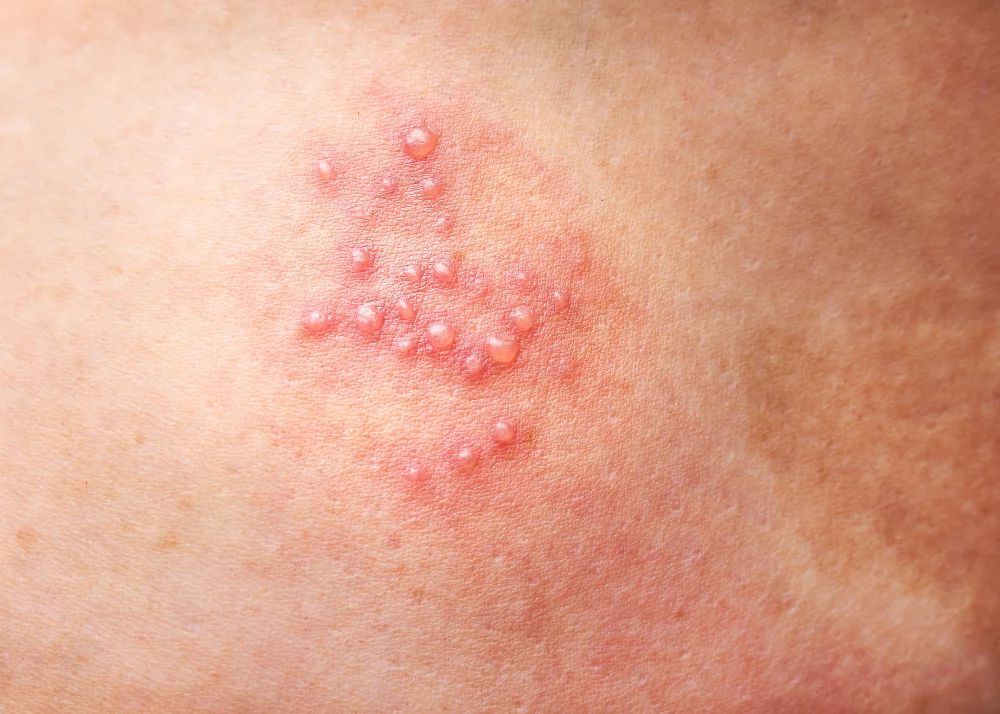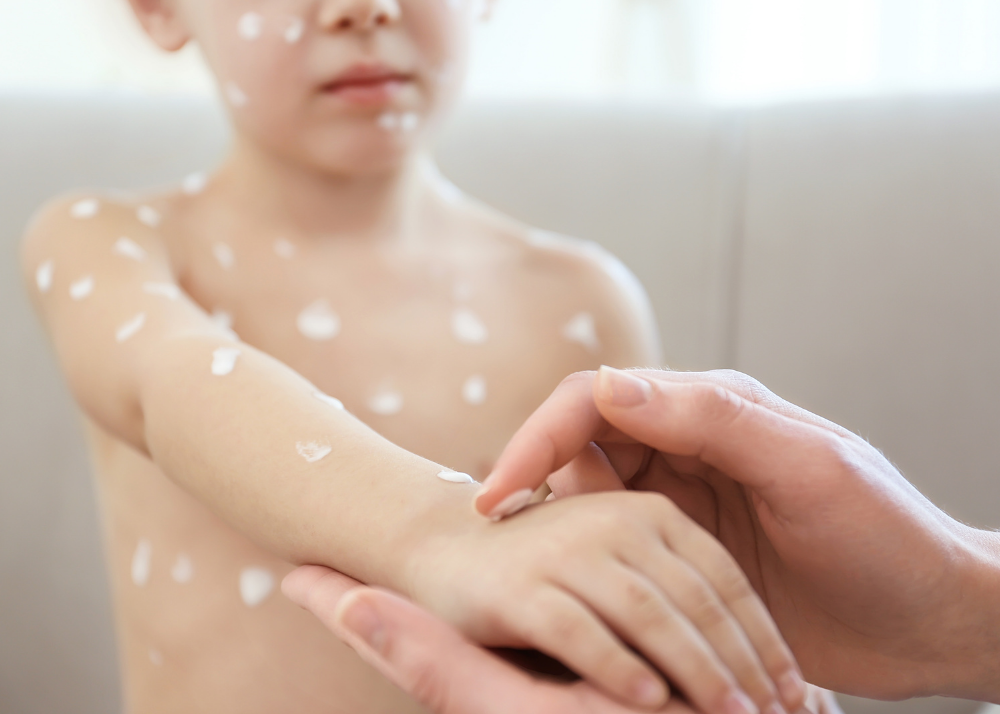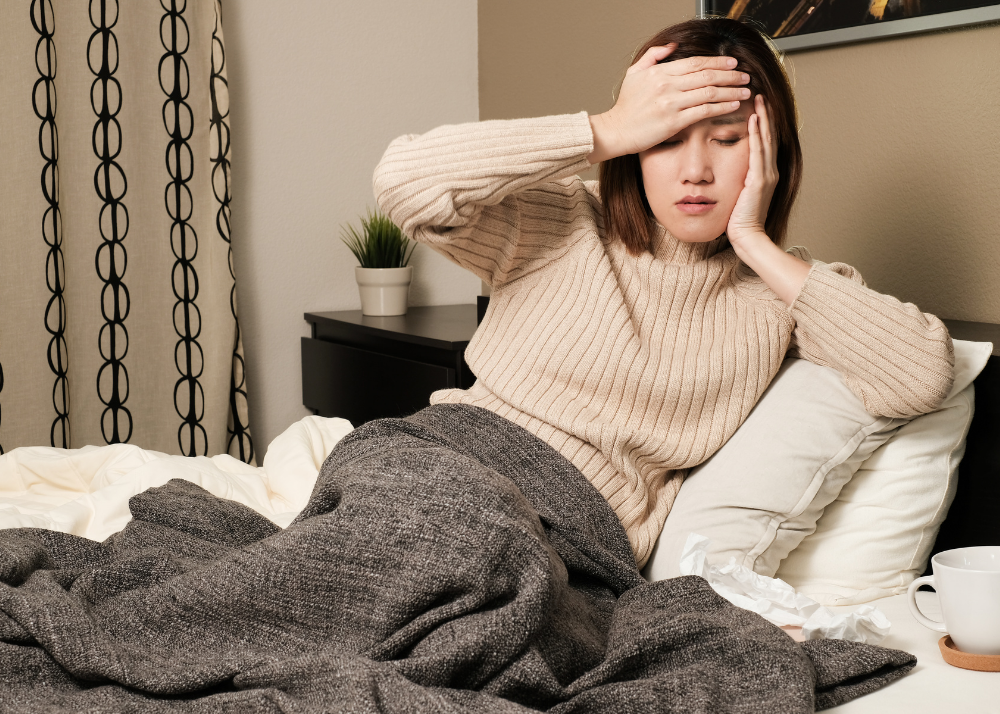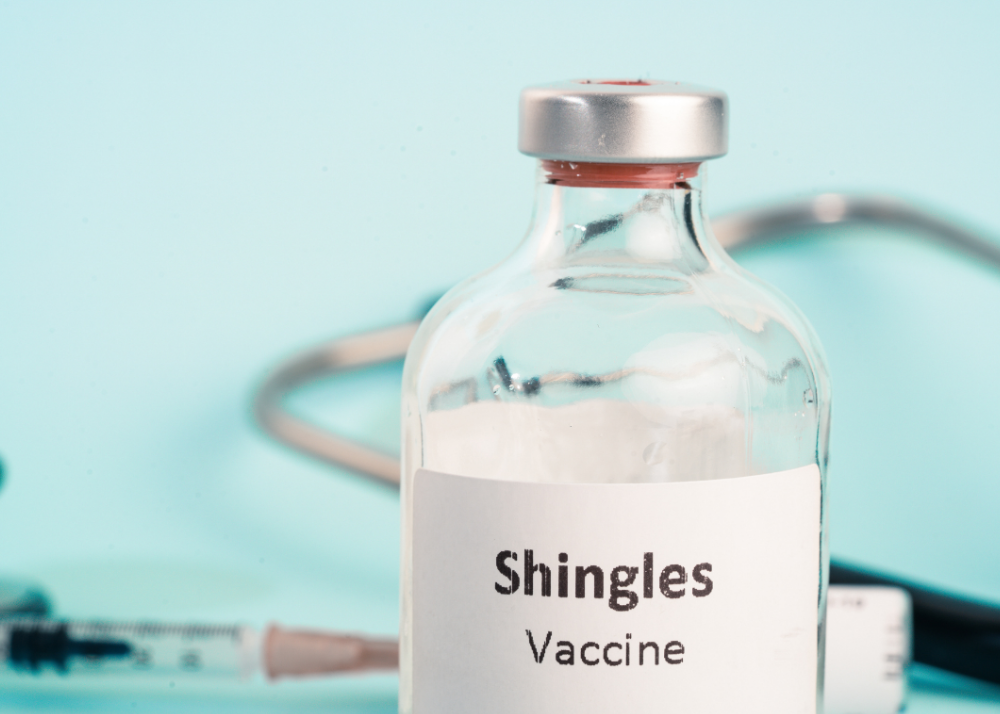
Shingles (Herpes Zoster) is a painful rash caused by the varicella-zoster virus, which causes chickenpox. After chickenpox, the virus lies inactive in nerve tissue near your spinal cord and brain. Years later, the virus may reactivate as shingles.
Shingles pain is, for many people, quite striking in its severity. It usually appears in a band or strip on one side of the face or body. Shingles usually only affect one side of your body.
Shingles rash/Herpes Zoster can occur anywhere on your body but most commonly appears as a band of blisters wrapping around either your torso’s left or right side. In some cases, blisters can also occur on your face and eyes. Symptoms of shingles rash include fever, headache, chills, and an upset stomach.

Causes & Risk Factors
Shingles is caused by the varicella-zoster virus, the same virus that causes chickenpox. This virus lies dormant in your nervous system after you have had chickenpox, but it can be reactivated later in life and cause shingles.
Shingles usually affect people over the age of 50, although it can occur at any age. Shingles is more common in women than men. Other risk factors for shingles include:
- Weakened immune system
- Medications that suppress the immune system
- Aging
- Stress
The Shingles Virus is characterized by a painful rash that develops on one side of the body or face. The rash starts as small red bumps and then turns into fluid-filled blisters. Shingles rash can be accompanied by fever, headache, and fatigue.
Shingles pain can be mild to severe. In some cases, the pain can last for months after the rash has gone away. If you think you might have shingles, see your doctor as soon as possible. Early diagnosis and treatment can help to reduce the severity of symptoms and shorten the duration of the illness. Getting the Shingles Vaccine can also make symptoms of shingles less severe.

Symptoms
-
- The early symptoms are usually one-sided pain, tingling, and burning.
- Next, red patches on the skin, followed by small blisters, appear.
- Then, blisters fill with fluid and then crust over. It generally takes 2-4 weeks for the blisters to heal, and scarring is possible.
- Itching often accompanies the rash and blisters.
- Other symptoms include fever and chills, general achiness, headache, and fatigue.
Diagnosis
Tests are rarely needed for shingles since the condition can usually be diagnosed by looking at your skin and asking questions about your medical history. However, a skin sample can be taken to determine if it is infected with the varicella-zoster virus. Blood tests may show an increase in white blood cells and antibodies to the chickenpox virus but cannot confirm that shingles pain and rashes are related.
Preventing & Treating Shingles
There is no cure for shingles, but there are treatments that can help to ease the pain and speed up the healing process. Antiviral drugs such as acyclovir, valacyclovir, and famciclovir can be used to treat shingles. These drugs can help to shorten the duration of the illness and reduce the severity of symptoms.
Pain relievers such as acetaminophen or ibuprofen can be used to help relieve pain. Topical creams and ointments can also be used to help relieve pain and speed up the healing process. If you have shingles, it is important to keep the affected area clean and dry.
You should also avoid contact with people who have not had chickenpox or who have a weakened immune system.
Shingles Complications
People older than 60 or who had chickenpox before one’s age are more likely to develop the condition. In some cases, shingles can cause long-term complications – and the treatment plan is dependent upon those complications:
Postherpetic Neuralgia (PHN)
Characterized by persistent pain that lasts for months or even years after the shingles rash heals, postherpetic neuralgia can be treated with opioids, antidepressants, and anticonvulsants to relieve pain.
Herpes Zoster Ophthalmicus (HZO)
Defined as a rash on the forehead, cheek, nose, or around one eye that can threaten sight, the recommended treatment is rest, cool compresses, and antiviral medicines.
Disseminated Zoster
A blistery rash that forms over a large portion of the body and can affect the heart, lungs, liver, pancreas, joints, and intestinal tract. Treatment can include antiviral medicines to challenge the virus and antibiotics to stop the infection.
Singles Pain Management & Treatment
While there is no cure for shingles, treatment may shorten the length of illness and prevent complications. Self-medication can include over-the-counter pain relievers and antihistamines. Antiviral medications can also be prescribed by a doctor to treat the virus, and these are most effective when started within 72 hours of the rash first appearing.
The following are some tips for managing pain from shingles:
- Apply cool, wet compresses to the rash. This can help soothe the pain and itchiness.
- Avoid hot showers or baths. Heat can worsen the pain.
- Take over-the-counter pain relievers such as ibuprofen or acetaminophen.
- Use calamine lotion or topical cooling gels to relieve itching.
- Wear loose-fitting clothing to avoid irritating the rash.
- For severe pain, your doctor may prescribe stronger pain medications or nerve blocks.
- Antihistamines to reduce itching.
- Soothing baths – such as colloidal oatmeal or starch baths – or soothing lotions such as calamine help relieve itching and discomfort.

Should I Get the Shingles Vaccine?
The best way to prevent shingles is to get the shingles vaccine. The shingles vaccine is a live vaccine, which means it contains a live, but weakened form of the virus. The vaccine is given as a shot and is typically given to people over 50 years of age. It is important to note that the shingles vaccine is not 100% effective and does not prevent all cases of shingles. However, it can reduce the severity of symptoms and the risk of developing complications from shingles.
If you have any questions about the shingles vaccine or would like to learn more about our shingles pain management and treatment options, please contact us today.
At PMIR Medical Center, we offer various shingles pain management and treatment options, including:

